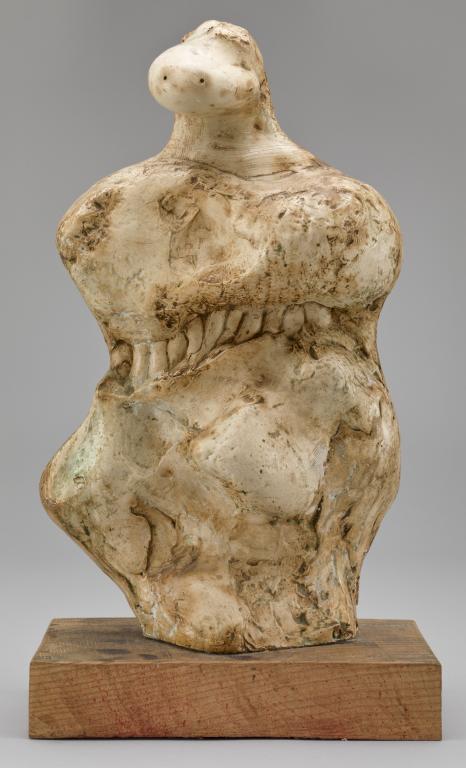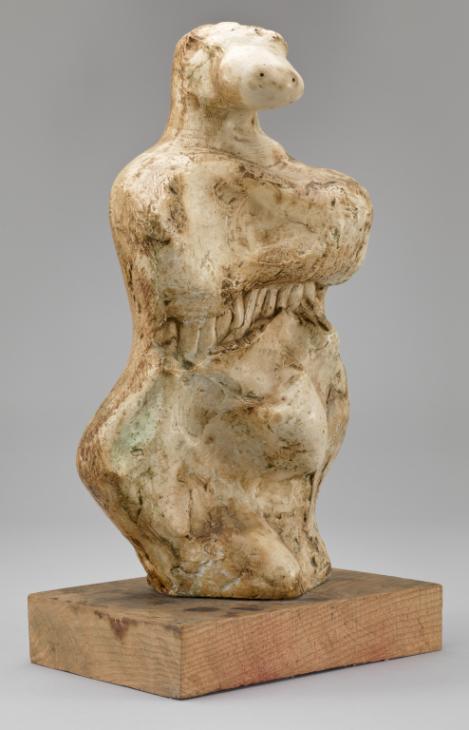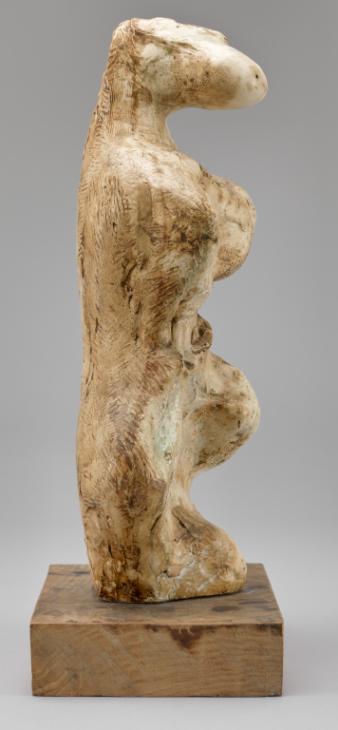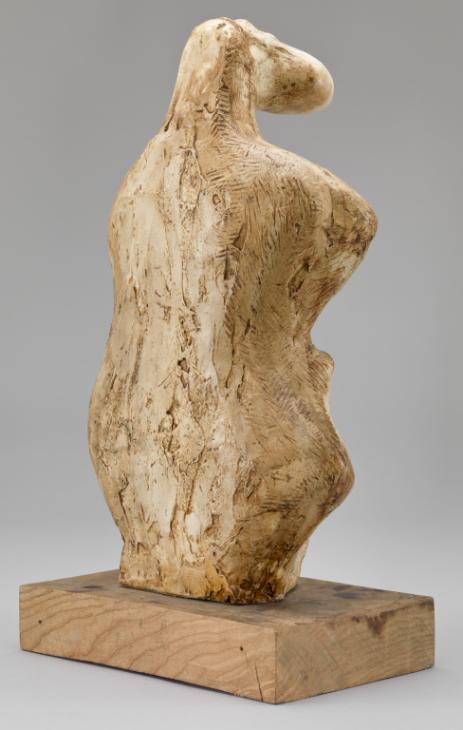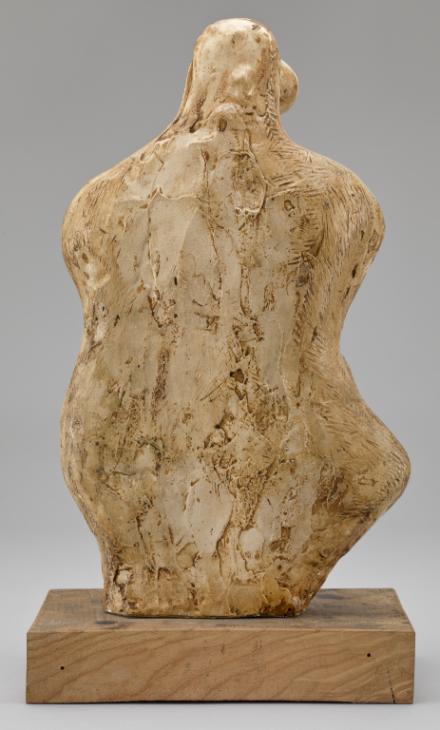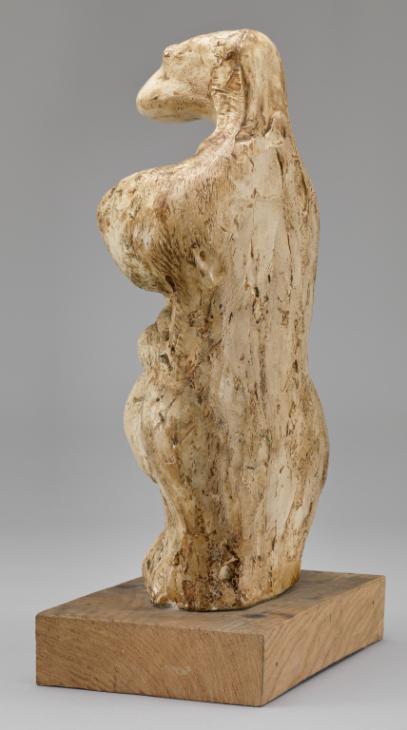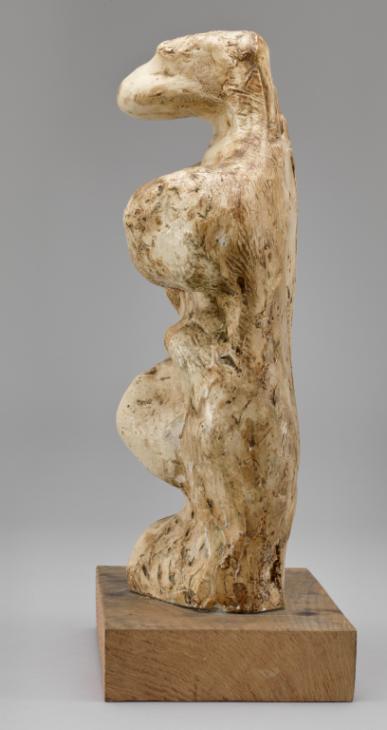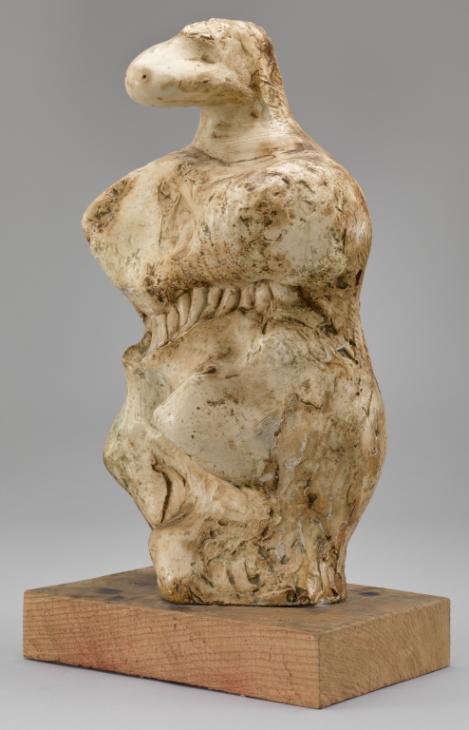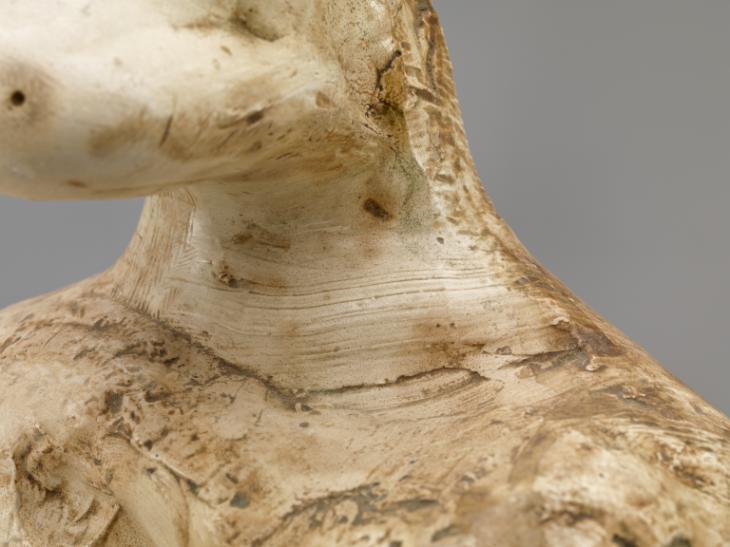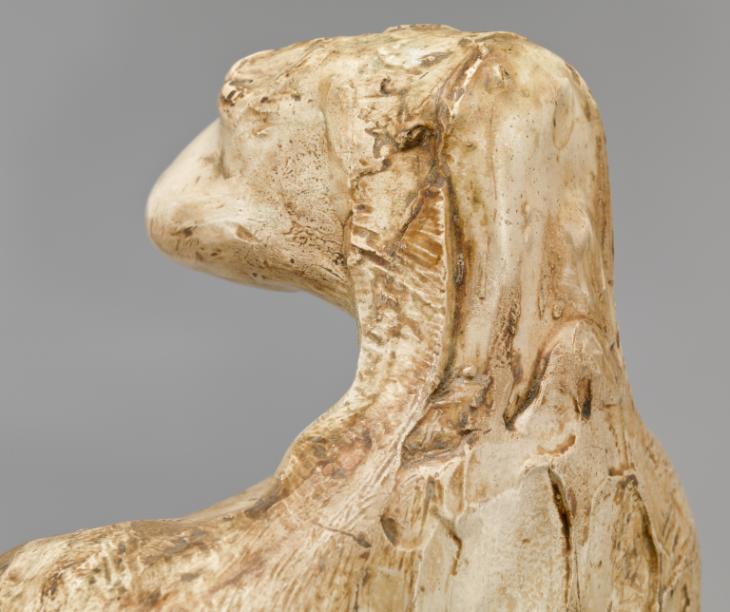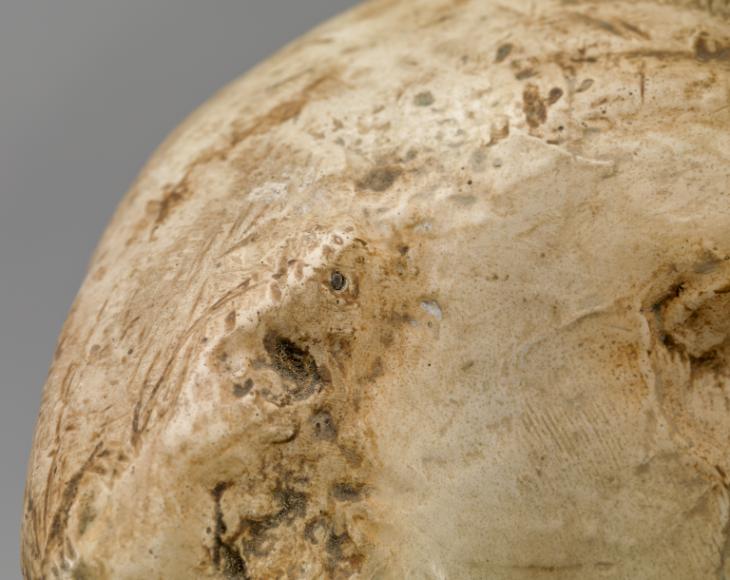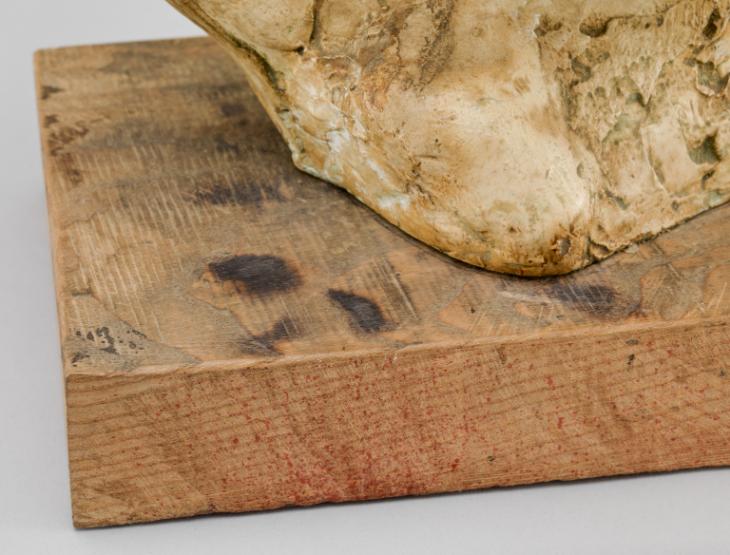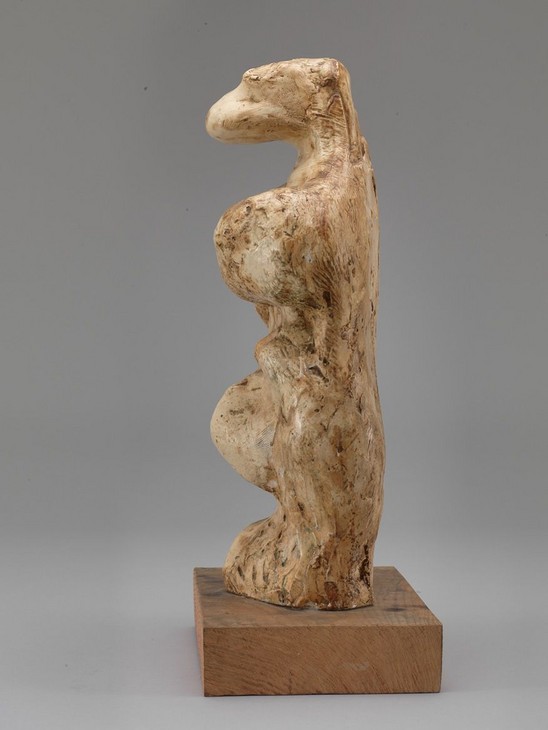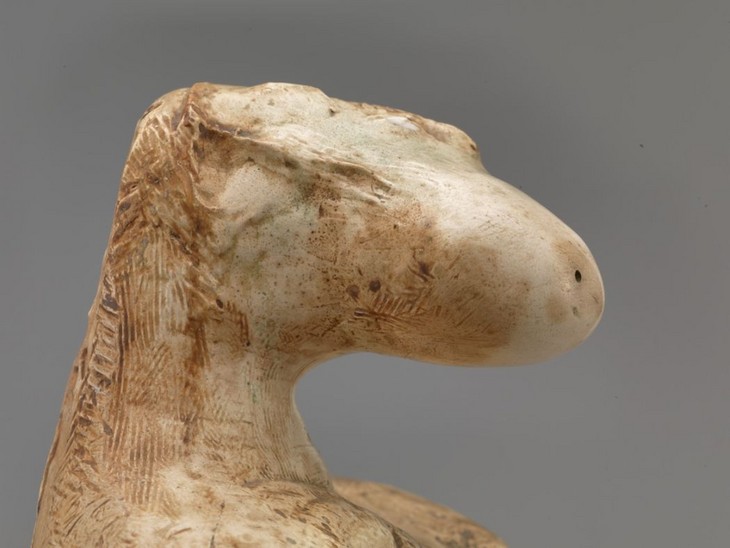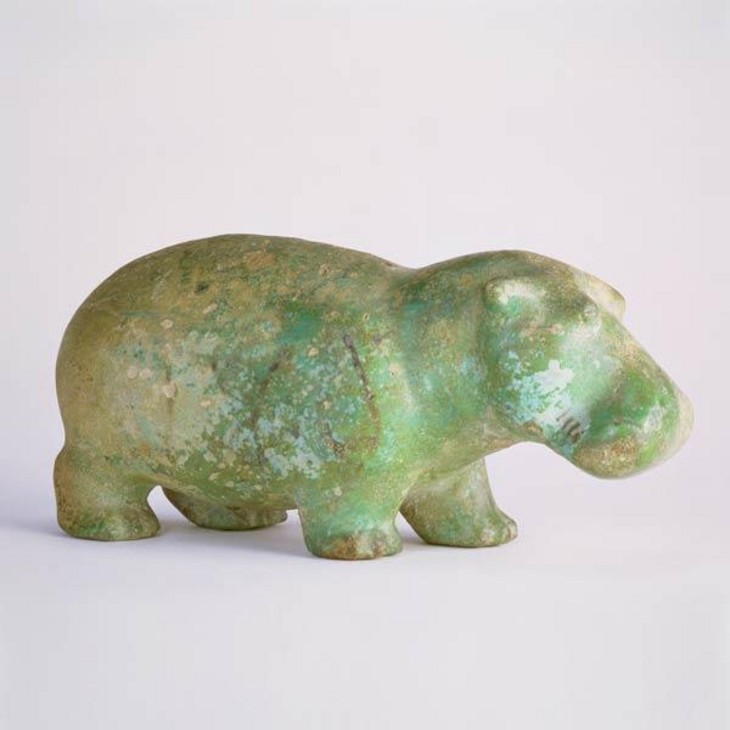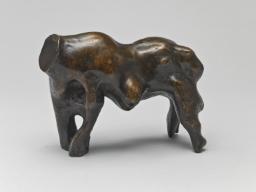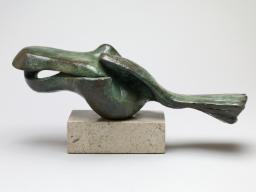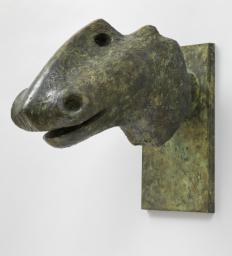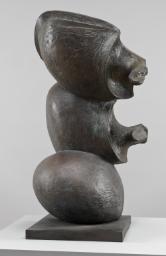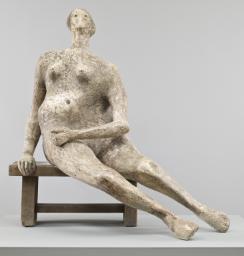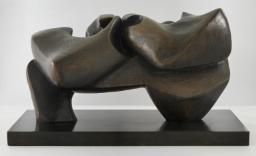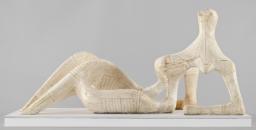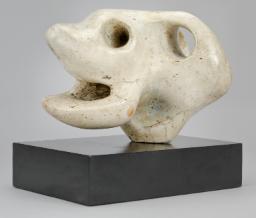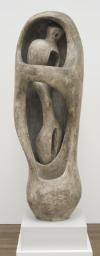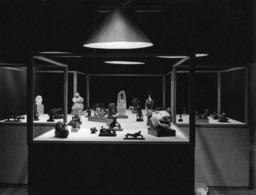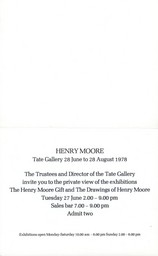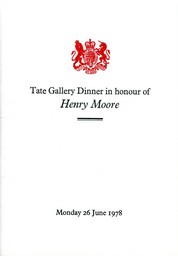Henry Moore OM, CH Three-Quarter Figure 1961
Image 1 of 15
-
 Henry Moore OM, CH, Three-Quarter Figure 1961© The Henry Moore Foundation. All Rights Reserved© The Henry Moore Foundation. All Rights Reserved
Henry Moore OM, CH, Three-Quarter Figure 1961© The Henry Moore Foundation. All Rights Reserved© The Henry Moore Foundation. All Rights Reserved -
 Henry Moore OM, CH, Three-Quarter Figure 1961© The Henry Moore Foundation. All Rights Reserved© The Henry Moore Foundation. All Rights Reserved
Henry Moore OM, CH, Three-Quarter Figure 1961© The Henry Moore Foundation. All Rights Reserved© The Henry Moore Foundation. All Rights Reserved -
 Henry Moore OM, CH, Three-Quarter Figure 1961© The Henry Moore Foundation. All Rights Reserved© The Henry Moore Foundation. All Rights Reserved
Henry Moore OM, CH, Three-Quarter Figure 1961© The Henry Moore Foundation. All Rights Reserved© The Henry Moore Foundation. All Rights Reserved -
 Henry Moore OM, CH, Three-Quarter Figure 1961© The Henry Moore Foundation. All Rights Reserved© The Henry Moore Foundation. All Rights Reserved
Henry Moore OM, CH, Three-Quarter Figure 1961© The Henry Moore Foundation. All Rights Reserved© The Henry Moore Foundation. All Rights Reserved -
 Henry Moore OM, CH, Three-Quarter Figure 1961© The Henry Moore Foundation. All Rights Reserved© The Henry Moore Foundation. All Rights Reserved
Henry Moore OM, CH, Three-Quarter Figure 1961© The Henry Moore Foundation. All Rights Reserved© The Henry Moore Foundation. All Rights Reserved -
 Henry Moore OM, CH, Three-Quarter Figure 1961© The Henry Moore Foundation. All Rights Reserved© The Henry Moore Foundation. All Rights Reserved
Henry Moore OM, CH, Three-Quarter Figure 1961© The Henry Moore Foundation. All Rights Reserved© The Henry Moore Foundation. All Rights Reserved -
 Henry Moore OM, CH, Three-Quarter Figure 1961© The Henry Moore Foundation. All Rights Reserved© The Henry Moore Foundation. All Rights Reserved
Henry Moore OM, CH, Three-Quarter Figure 1961© The Henry Moore Foundation. All Rights Reserved© The Henry Moore Foundation. All Rights Reserved -
 Henry Moore OM, CH, Three-Quarter Figure 1961© The Henry Moore Foundation. All Rights Reserved© The Henry Moore Foundation. All Rights Reserved
Henry Moore OM, CH, Three-Quarter Figure 1961© The Henry Moore Foundation. All Rights Reserved© The Henry Moore Foundation. All Rights Reserved -
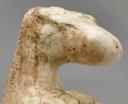 Henry Moore OM, CH, Three-Quarter Figure 1961© The Henry Moore Foundation. All Rights Reserved© The Henry Moore Foundation. All Rights Reserved
Henry Moore OM, CH, Three-Quarter Figure 1961© The Henry Moore Foundation. All Rights Reserved© The Henry Moore Foundation. All Rights Reserved -
 Henry Moore OM, CH, Three-Quarter Figure 1961© The Henry Moore Foundation. All Rights Reserved© The Henry Moore Foundation. All Rights Reserved
Henry Moore OM, CH, Three-Quarter Figure 1961© The Henry Moore Foundation. All Rights Reserved© The Henry Moore Foundation. All Rights Reserved -
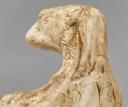 Henry Moore OM, CH, Three-Quarter Figure 1961© The Henry Moore Foundation. All Rights Reserved© The Henry Moore Foundation. All Rights Reserved
Henry Moore OM, CH, Three-Quarter Figure 1961© The Henry Moore Foundation. All Rights Reserved© The Henry Moore Foundation. All Rights Reserved -
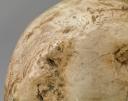 Henry Moore OM, CH, Three-Quarter Figure 1961© The Henry Moore Foundation. All Rights Reserved© The Henry Moore Foundation. All Rights Reserved
Henry Moore OM, CH, Three-Quarter Figure 1961© The Henry Moore Foundation. All Rights Reserved© The Henry Moore Foundation. All Rights Reserved -
 Henry Moore OM, CH, Three-Quarter Figure 1961© The Henry Moore Foundation. All Rights Reserved© The Henry Moore Foundation. All Rights Reserved
Henry Moore OM, CH, Three-Quarter Figure 1961© The Henry Moore Foundation. All Rights Reserved© The Henry Moore Foundation. All Rights Reserved -
 Henry Moore OM, CH, Three-Quarter Figure 1961© The Henry Moore Foundation. All Rights Reserved© The Henry Moore Foundation. All Rights Reserved
Henry Moore OM, CH, Three-Quarter Figure 1961© The Henry Moore Foundation. All Rights Reserved© The Henry Moore Foundation. All Rights Reserved -
 Henry Moore OM, CH, Three-Quarter Figure 1961© The Henry Moore Foundation. All Rights Reserved© The Henry Moore Foundation. All Rights Reserved
Henry Moore OM, CH, Three-Quarter Figure 1961© The Henry Moore Foundation. All Rights Reserved© The Henry Moore Foundation. All Rights Reserved
© The Henry Moore Foundation. All Rights Reserved
Henry Moore OM, CH,
Three-Quarter Figure
1961
© The Henry Moore Foundation. All Rights Reserved
Three-Quarter Figure is a small plaster sculpture from which Henry Moore created a set of bronzes. It presents a standing figure with a distorted human body and the head of an animal, conveying Moore’s interest in the inner ‘vitality’ of living creatures.
Henry Moore OM, CH 1898–1986
Three-Quarter Figure
1961
Plaster on a wood base
391 x 233 x 131 mm
Presented by the artist 1978
T02288
Three-Quarter Figure
1961
Plaster on a wood base
391 x 233 x 131 mm
Presented by the artist 1978
T02288
Ownership history
Presented by the artist to Tate in 1978 as part of the Henry Moore Gift.
Exhibition history
1971
Henry Moore, Musée Rodin, Paris, 1971, no.41.
1977
Henry Moore: Sculptures et dessins, Musée de l’Orangerie des Tuileries, Paris, May–August 1977, no.98.
1978
Henry Moore: 80th Birthday Exhibition, Cartwright Hall, Bradford, April–June 1978, no.34.
1978
The Henry Moore Gift, Tate Gallery, London, June–August 1978, no number.
2002
Circles of Influence: David Sylvester, Tate Modern, London, March–November 2002, no number.
References
1965
Alan Bowness (ed.), Henry Moore. Volume 3: Sculpture and Drawings 1955–64, 1965, revised edn, London 1986, no.487 (bronze cast reproduced pl.126–7).
1965
Stephen Spender, The Struggle of the Modern, Berkeley 1965, p.90.
1968
John Hedgecoe (ed.), Henry Moore, London 1968, p.366 (bronze cast reproduced pp.366–7).
1968
John Russell, Henry Moore, London 1968, p.159 (bronze cast reproduced pl.170).
1970
Robert Melville, Henry Moore: Sculpture and Drawings 1921–69, London 1970 (bronze cast reproduced no.606).
1971
Henry Moore, exhibition catalogue, Musée Rodin, Paris 1971, reproduced no.41.
1973
John Russell, Henry Moore, London 1973, p.184 (bronze cast reproduced no.105).
1977
Henry Moore: Sculptures et dessins, exhibition catalogue, Musée de l’Orangerie des Tuileries, Paris 1977, reproduced p.110.
1978
Henry Moore: 80th Birthday Exhibition, exhibition catalogue, Cartwright Hall, Bradford 1978, reproduced no.34.
1978
The Henry Moore Gift, exhibition catalogue, Tate Gallery, London 1978, reproduced p.47.
1981
[Richard Calvocoressi], ‘Three-Quarter Figure’, The Tate Gallery 1978–80: Illustrated Catalogue of Acquisitions, London 1981, p.130.
1983
W.J. Strachan, Henry Moore: Animals, London 1983, p.134 (bronze cast reproduced no.130).
1998
John Hedgecoe, A Monumental Vision: The Sculpture of Henry Moore, London 1998 (bronze cast reproduced no.450).
2002
Looking at Modern Art: In Memory of David Sylvester, exhibition catalogue, Tate Modern, London 2002.
Technique and condition
This sculpture was probably made by casting an original clay model in plaster. The surface of the plaster is heavily textured and reveals that some parts of the original model were modelled while the clay was soft, while others were made using tools after the clay had hardened. The head of the sculpture was squeezed into shape in a way that impressed creases of the artist’s hand into its surface. The horizontal, striated section across the centre of the body appears to have been made using extruded clay strips laid side by side.
Moore may have used a simple box mould to cast the clay sculpture in plaster, since only the front surface of the model has been cast. The casting seam remains visible, particularly along the sides of the sculpture where a number of tool marks indicate that Moore subsequently filed away the plaster that had overflowed the mould (fig.1). He then proceeded to build layers of plaster onto the rear surface, probably using a spatula. A piece of metal embedded within the surface of the figure’s left shoulder suggests that Moore may have inserted wire into the wet plaster to reinforce it (fig.2).
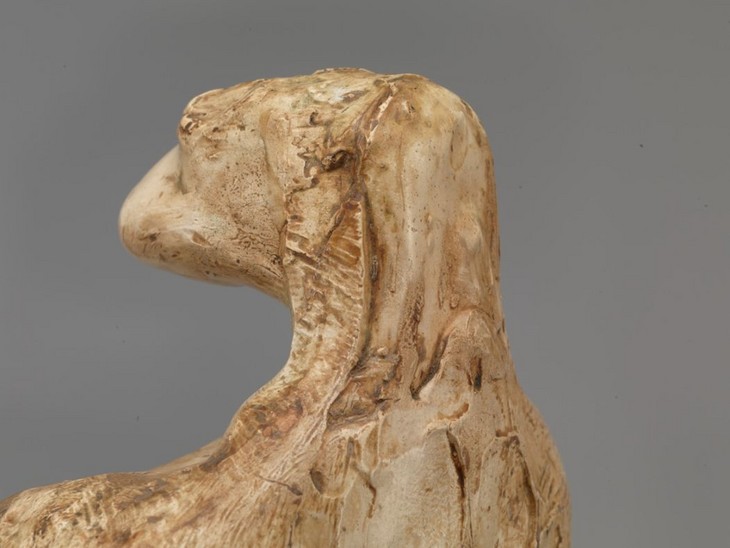
Detail of casting seam on Three-Quarter Figure 1961
Tate T02288
© The Henry Moore Foundation. All Rights Reserved
Fig.1
Detail of casting seam on Three-Quarter Figure 1961
Tate T02288
© The Henry Moore Foundation. All Rights Reserved
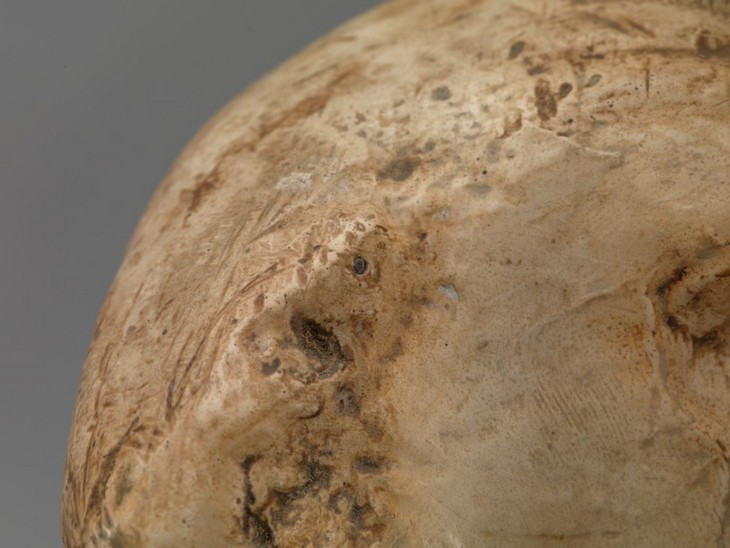
Detail of left shoulder of Three-Quarter Figure 1961
Tate T02288
© The Henry Moore Foundation. All Rights Reserved
Fig.2
Detail of left shoulder of Three-Quarter Figure 1961
Tate T02288
© The Henry Moore Foundation. All Rights Reserved
The surface of the sculpture is pale brown and has a slight sheen, indicating that it may have been coated with a varnish or shellac. This would have been applied as a release agent when a mould was taken from the plaster sculpture so that it could be cast in bronze at a professional foundry. A faint green tinge can be seen in recesses on the front and back of the sculpture, particularly on top of the head and on one of the sides (fig.3). These are likely to be stains produced by bronze dust settling on the surface at the foundry. There are no inscriptions on the plaster.
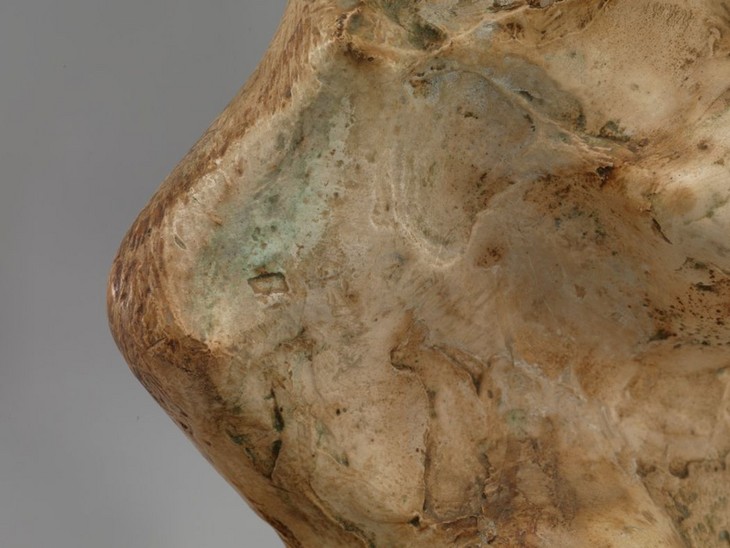
Detail of surface colour of Three-Quarter Figure 1961
Tate T02288
© The Henry Moore Foundation. All Rights Reserved
Fig.3
Detail of surface colour of Three-Quarter Figure 1961
Tate T02288
© The Henry Moore Foundation. All Rights Reserved
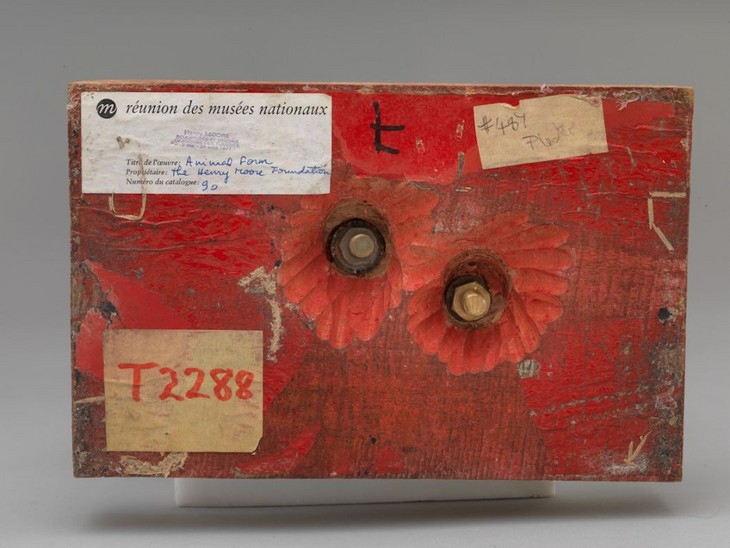
Underside of base of Three-Quarter Figure 1961
Tate T02288
© The Henry Moore Foundation. All Rights Reserved
Fig.4
Underside of base of Three-Quarter Figure 1961
Tate T02288
© The Henry Moore Foundation. All Rights Reserved
The base is made of unfinished softwood that is marked by saw marks and striations on all sides. Small, dark, circular marks on the upper surface appear to have been produced by charring and small splatters of red paint are visible on the front edge. Two bolts inserted through chiselled recesses on the underside – which has been painted red – fix the sculpture to the base (fig.4).
Lyndsey Morgan
March 2011
How to cite
Lyndsey Morgan, 'Technique and Condition', March 2011, in Alice Correia, ‘Three-Quarter Figure 1961 by Henry Moore OM, CH’, catalogue entry, April 2013, in Henry Moore: Sculptural Process and Public Identity, Tate Research Publication, 2015, https://wwwEntry
Three-Quarter Figure was made in 1961 and served as the original plaster model from which an edition of bronze sculptures was cast. The sculpture appears to present an upright figure with a broad, flat back, although the various bulbous protrusions that emerge from the front are largely abbreviated and only loosely reminiscent of human features. The uppermost part of the sculpture resembles most clearly a neck and a projecting head, while the rounded forms at the top of the torso may be understood to represent either shoulders or breasts depending on the viewpoint. A central bulbous protrusion occupies the position of the belly and projects sharply outwards creating recesses above and below (fig.1). At the base, another frontal swelling provides support for the sculpture but cannot be said to represent any particular anatomical feature.
When seen from the front the sides of the sculpture are revealed to be asymmetrical, but nonetheless evoke the form of a curvaceous female standing figure. The left side features a prominent hip, which projects out sharply into a point, while the shoulder above also protrudes more noticeably than the equivalent form on the right (fig.2). The sculpture is notable for the row of misaligned rectangular forms that are embedded into the front of the figure’s waist, which may represent a belt (fig.3).
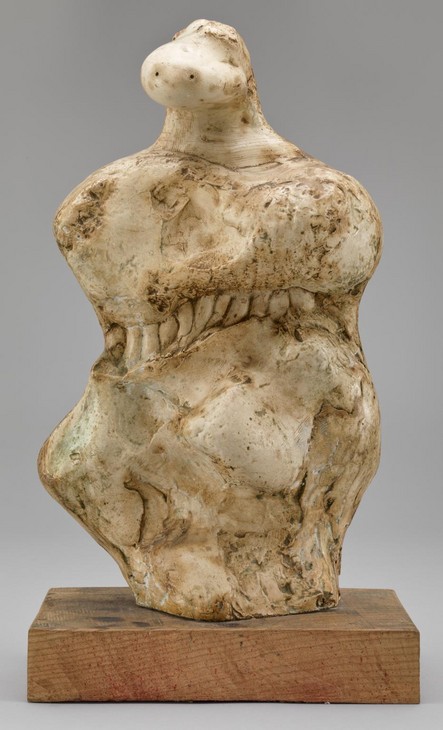
Henry Moore
Three-Quarter Figure 1961 (front view)
Tate T02288
© The Henry Moore Foundation. All Rights Reserved
Fig.2
Henry Moore
Three-Quarter Figure 1961 (front view)
Tate T02288
© The Henry Moore Foundation. All Rights Reserved
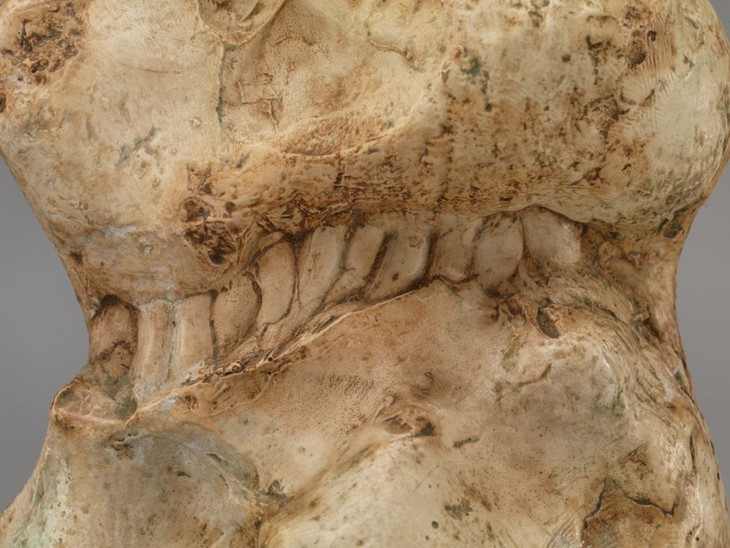
Detail of waist of Three-Quarter Figure 1961
Tate T02288
© The Henry Moore Foundation. All Rights Reserved
Fig.3
Detail of waist of Three-Quarter Figure 1961
Tate T02288
© The Henry Moore Foundation. All Rights Reserved
Although the body of the sculpture appears to be suggestive of a human female, the head is more reminiscent of an animal. It has a long, wide snout, at the end of which two equally-spaced circular incisions appear to represent nostrils. Raised ridges running down either side of the head are suggestive of eyes (fig.4). The projecting surfaces of the head, and the forehead and snout in particular, are much smoother than the heavily textured main body of the sculpture.
It is likely that Moore initially modelled the undulating front surface of Three-Quarter Figure in a malleable material such as clay. The bulge of the belly seems to have been produced by pinching together the clay, leaving a smoothed recessed area around it (fig.5). This clay model would then have been cast in plaster, probably using a simple box mould. A sharp edge running the length of the neck and around the top of the head indicates the point at which the cast front section meets the rear (fig.6). The swathes of plaster visible across the back of sculpture indicate that this side of the figure was built up with a spatula, while the plaster surface on the front appears to have been modelled and shaped by hand before being finished with a number of different tools.
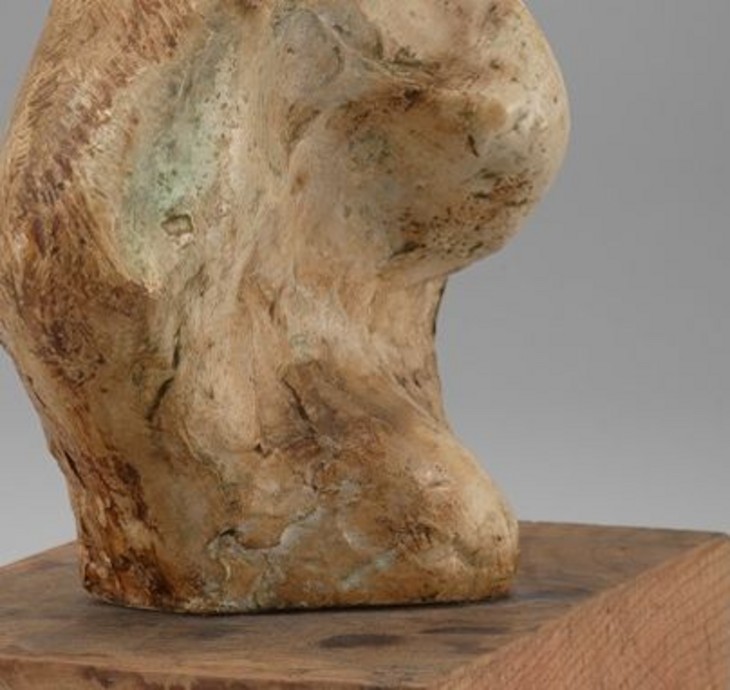
Detail of belly of Three-Quarter Figure 1961
Tate T02288
© The Henry Moore Foundation. All Rights Reserved
Fig.5
Detail of belly of Three-Quarter Figure 1961
Tate T02288
© The Henry Moore Foundation. All Rights Reserved

Detail of casting seam on Three-Quarter Figure 1961
Tate T02288
© The Henry Moore Foundation. All Rights Reserved
Fig.6
Detail of casting seam on Three-Quarter Figure 1961
Tate T02288
© The Henry Moore Foundation. All Rights Reserved

Detail of surface colour of Three-Quarter Figure 1961
Tate T02288
© The Henry Moore Foundation. All Rights Reserved
Fig.7
Detail of surface colour of Three-Quarter Figure 1961
Tate T02288
© The Henry Moore Foundation. All Rights Reserved
Once the plaster was complete Moore sent it to Remo Fiorini’s Art Bronze Foundry in London where it was cast in bronze in an edition of nine plus one artist’s copy. When Moore first started working in plaster in the early 1950s he regarded original models like Three-Quarter Figure as necessary stages in the production of a bronze edition, and not as works of art in their own right. He often destroyed his original plasters after a bronze edition had been cast to ensure that no additional, unauthorised sculptures were produced from them. However, Moore sometimes retained his plasters and exhibited them when bronze versions were unavailable to meet the demand for exhibitions of his work. Gradually Moore’s attitude towards his plasters shifted and he began to see them as unique objects with a distinct character. In the early 1970s he declared, ‘these are not plaster casts; they are plaster originals ... they are actual works that one has done with one’s hands’.3
Having decided to stop destroying his plasters Moore was then faced with the problem of what to do with them. Selling them on the open market would increase the risk of casts being made without his permission but he did not have the required space to keep the plasters indefinitely. A solution was found in the form of philanthropic gifts, first to the Art Gallery of Ontario (AGO) in Toronto in 1974 and then to the Tate in 1978.
Having decided to give the AGO and Tate examples of the original plasters, in the early 1970s Moore’s studio assistants John Farnham, Michael Muller and Malcolm Woodward set about restoring and repairing the damaged plasters and removing remnants of resin sealant applied to their surfaces during the casting process. According to Alan Wilkinson, who was a curator at the AGO at the time of Moore’s gift, this work revealed ‘more clearly the extraordinary variety of surface details and textures, each of the original plasters having its own unique surface colouring and tonality’.4 The donation of his plasters to the AGO and Tate marked a significant shift in the way that Moore’s plasters were regarded. They are now presented and understood as unique works of art and provide, according to Feldman, ‘a fuller understanding of Moore’s working methods’.5
Sources and interpretation
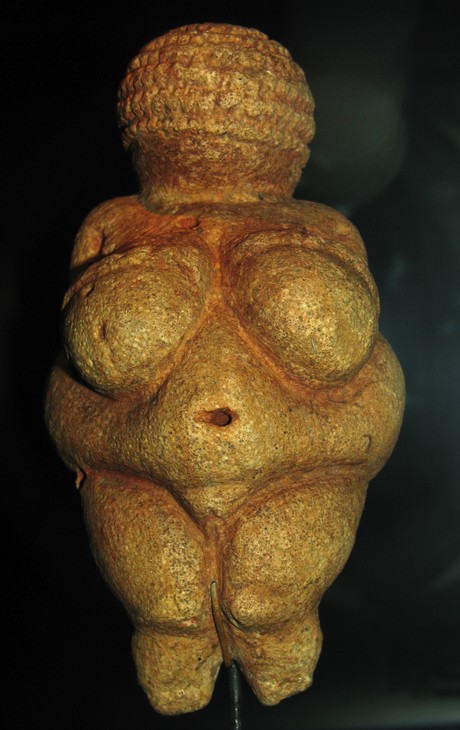
Woman of Willendorf 24,000–22,000 BC
Oolitic limestone
Naturhistorisches Museum, Vienna
Fig.8
Woman of Willendorf 24,000–22,000 BC
Naturhistorisches Museum, Vienna
Moore had developed a keen interest in so-called ‘primitive art’ during the 1920s, during which time artists and critics were looking to challenge the dominant academic conventions of European art by drawing upon the visual language of ancient, prehistoric and non-Western artistic sources. In 1932 Moore observed that:
The primitive simplifies, I think, through directness of emotional aim to intensify their expression. Simplicity as an aim in itself tends to emptiness and monotony, but simplicity in carving, interpreted as lack of surface trimmings, reveals the contrast in section, axis, direction and bulk between different shapes and so intensifies the three-dimensional power in a work.7
The heavily undulating surface of Three-Quarter Figure produces shifts in the directional pull of the sculpture. Considered in light of the high regard Moore had for sculptural simplicity, these stylised forms may be said to convey the sculpture’s ‘three-dimensional power’. In his 1965 book The Struggle of the Modern, Stephen Spender, a poet and close friend of Moore’s, made note of the artist’s ambition to stretch the bodily forms of Three-Quarter Figure without compromising its human identity:
I remarked to Henry Moore one day that I was particularly struck by his ‘three quarters figure’ 1961, a distorted figure with a lumpy grotesquely shaped torso and a head half bird-beak, half hippopotamus. He said he was glad I liked it because a good many people had not seen the point of it, and it was one he liked himself. The next time we met I could not resist asking him what the point he had in mind was. He answered that what he was trying to do was pull the human body about as much as possible, distending it here, pushing it there, and putting on to it a non-human head, but nevertheless retaining its recognisability as a human figure. 8
Discussing Three-Quarter Figure in 1968 Moore himself stated, ‘This piece with a head is rather like a hippopotamus’.9 This association was later strengthened by the writer W.J. Strachan, who reproduced an image of an ancient Egyptian ceramic hippopotamus (fig.9) opposite an illustration of Three-Quarter Figure in his 1983 publication Henry Moore: Animals.10 In the book Strachan categorised Moore’s sculpture under the subheading ‘Fantastic and Fabulous’, and associated Three-Quarter Figure with Moore’s Headless Animal (Tate T02283) made the previous year, suggesting that the sculptures share a ‘note of mystery’.11
The Henry Moore Gift
Three-Quarter Figure was presented by Henry Moore to the Tate Gallery in 1978 as part of the Henry Moore Gift, which comprised thirty-six sculptures including examples of the artist’s work in bronze, marble and plaster. Moore had initiated discussions about a major gift to the Tate in the early 1960s and signed a deed of agreement in June 1969.12 This agreement outlined the terms of the Henry Moore Gift and the works to be included in it. Moore did not stipulate that the works had to be on display permanently, or that a certain number of them had to be exhibited at any one time, but the agreement did state that the Gift was subject to Tate increasing the overall size of its gallery space. It also granted Moore permission to swap or exchange works on the agreed list with the approval of the Trustees, and that the Gift would remain in Moore’s possession for his lifetime, should he so choose.
In 1977 Tate’s director Norman Reid petitioned Moore to present his Gift so that it could be displayed in its entirety alongside the Tate’s existing collection of his work in an exhibition celebrating the artist’s eightieth birthday scheduled for the following year. Moore duly agreed and the Gift was delivered to the Tate in June 1978. Three-Quarter Figure was included in the birthday exhibition, which was attended by over 20,500 people while nearly 11,000 copies of the catalogue were sold.13 Along with Three-Quarter Figure the Gift also included four other works in plaster. These were Reclining Figure 1951 (Tate T02270), Animal Head 1951 (Tate T02271), Upright Internal/External Form 1952–3 (Tate T02272), and Seated Woman 1957 (Tate T02279).
Alice Correia
April 2013
Notes
Anita Feldman, ‘Moore: The Plasters’, in Anita Feldman and Malcolm Woodward, Henry Moore: Plasters, London 2011, p.12.
Alan G. Wilkinson, Henry Moore Remembered: The Collection at the Art Gallery of Ontario in Toronto, Toronto 1987, p.18.
[Richard Calvocoressi], ‘Three-Quarter Figure’, The Tate Gallery 1978–80: IllustratedCatalogue of Acquisitions, London 1981, p.130.
This Egyptian sculpture had been acquired by Moore’s friends Robert and Lisa Sainsbury in 1950. Moore had encouraged the Sainsburys’ interest in non-Western art and, given their close relationship, it is likely that he would have seen the Sainsburys’ hippopotamus during one of his visits to their home.
Related essays
- Henry Moore: The Plasters Anita Feldman
- At the Heart of the Establishment: Henry Moore as Trustee Julia Kelly
Related catalogue entries
Related material
-
Photograph
How to cite
Alice Correia, ‘Three-Quarter Figure 1961 by Henry Moore OM, CH’, catalogue entry, April 2013, in Henry Moore: Sculptural Process and Public Identity, Tate Research Publication, 2015, https://www

